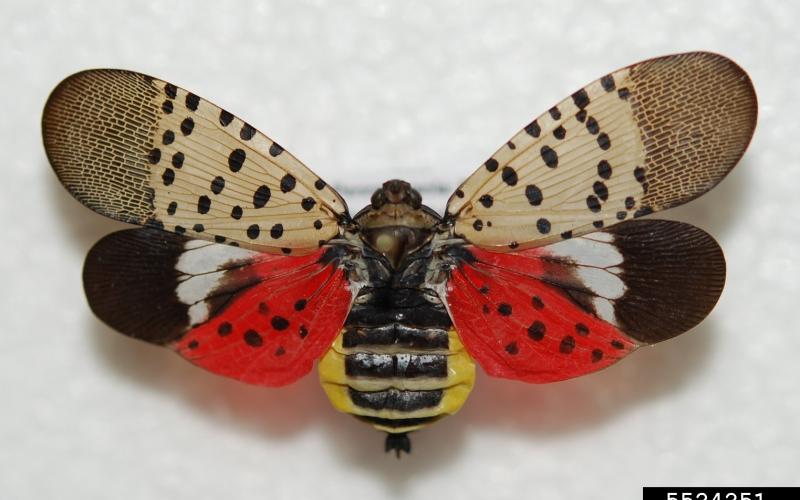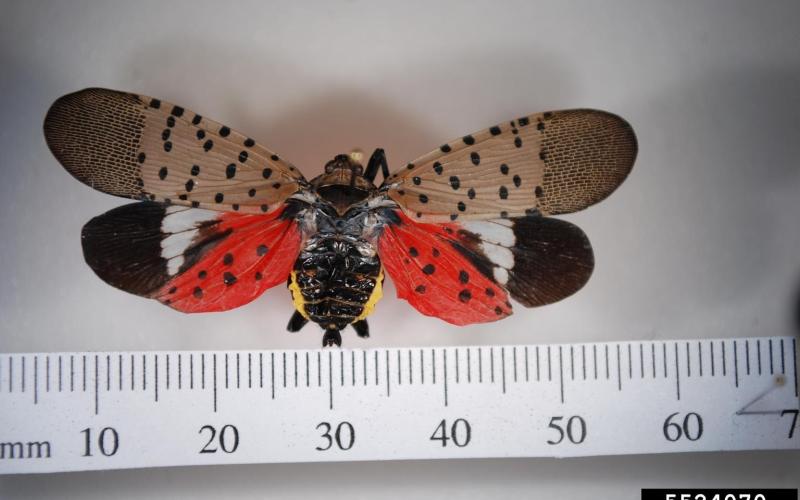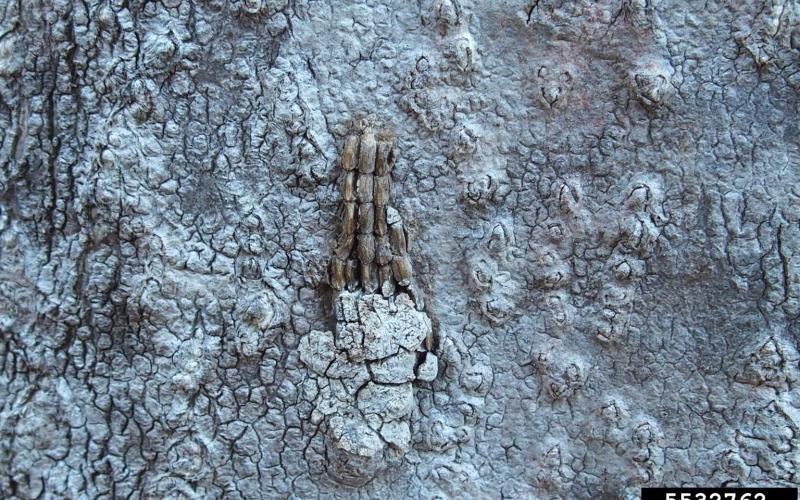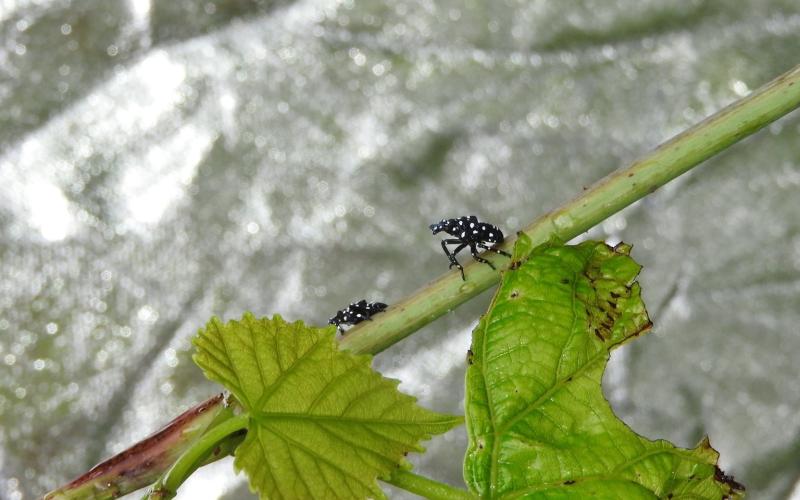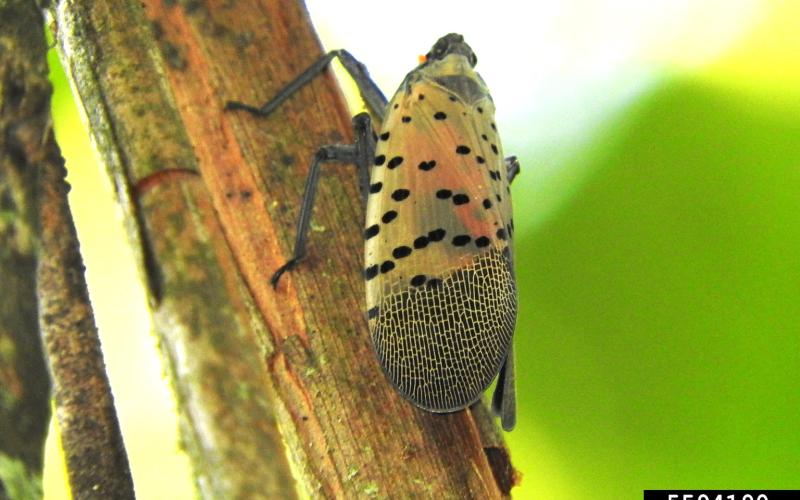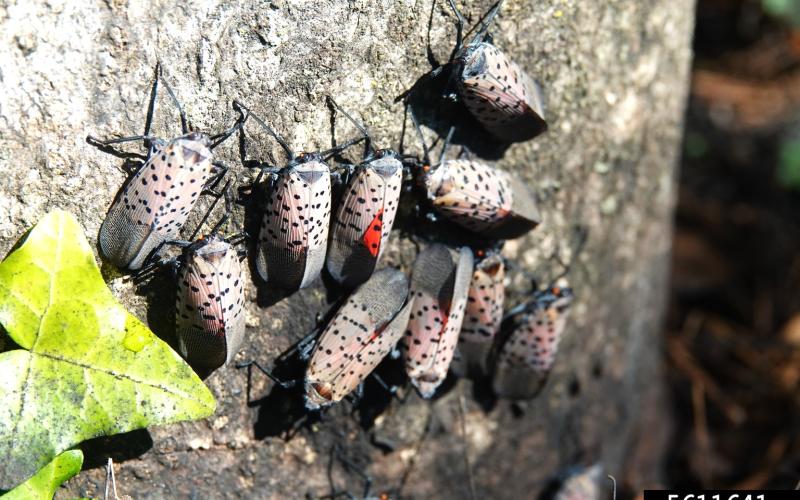Scientific name: Lycorma delicatula White
Native range: China, India, Japan and Vietnam
At Risk
The primary hosts of spotted lanternfly are tree of heaven and grapes. However, in Korea, it has been recorded attacking 65 different species; many of these same genera occur in Minnesota including apple, grape, willow, oak, walnut, silver maple, common lilac, poplar, eastern white pine, and rose. Tree of heaven is not widely present in Minnesota, and it is possible that spotted lanternfly would not thrive in Minnesota without this important host.
If spotted lanternfly did become established in Minnesota, it could impact grape, apple and nursery production.
Distribution
The spotted lanternfly is not known to occur in Minnesota. It was detected in Pennsylvania in September 2014 and is continuing to spread throughout the Mid-Atlantic States.
Biology
The spotted lanternfly deposits eggs from late September thru early December on both host plant surfaces and on non-host material such as bricks, stones, and dead plants. Eggs are laid in groups and are covered in a yellowish-brown waxy deposit. Nymphs hatch from the eggs in spring and early summer; the young nymphs begin sucking sap from plant stems and leaves. Nymphs and adults may feed on a variety of plants, although in late summer and fall adults focus their feeding on tree of heaven and grape species. Tree of heaven may be a particularly important host because the insects sequester toxins from the plant, making them less palatable to birds. Adults are poor fliers and the most likely way for spotted lanternfly to spread to new areas is by unintentional movement of materials infested with egg masses.
Identification
Adult spotted lanternflies are approximately 1-inch long and one-half inch wide with large showy wings. Forewings are light brown with black spots near the body and a speckled band near the end. Hind wings are scarlet with black spots near the body with white and black bars at towards the tip. The body of the insect is yellow with black bars. Young nymphs appear black with white spots and turn to a red phase before becoming adults. Egg masses are yellowish-brown in color, covered with a gray, waxy coating, and are difficult to see.
Regulatory Status: Regulated
The Pennsylvania Department of Agriculture issued a quarantine to restrict the movement of the spotted lanternfly on November 1, 2014. Areas of Pennsylvania are regulated to prevent spotted lanternfly from spreading to new areas. If spotted lanternfly is discovered in Minnesota, actions may be taken to prevent its spread to new areas and to eradicate or control any infestations.
What Can I Do?
Contact the MDA via Report a Pest if you suspect an infestation of spotted lanternfly in Minnesota.
Smarty Plants Podcast
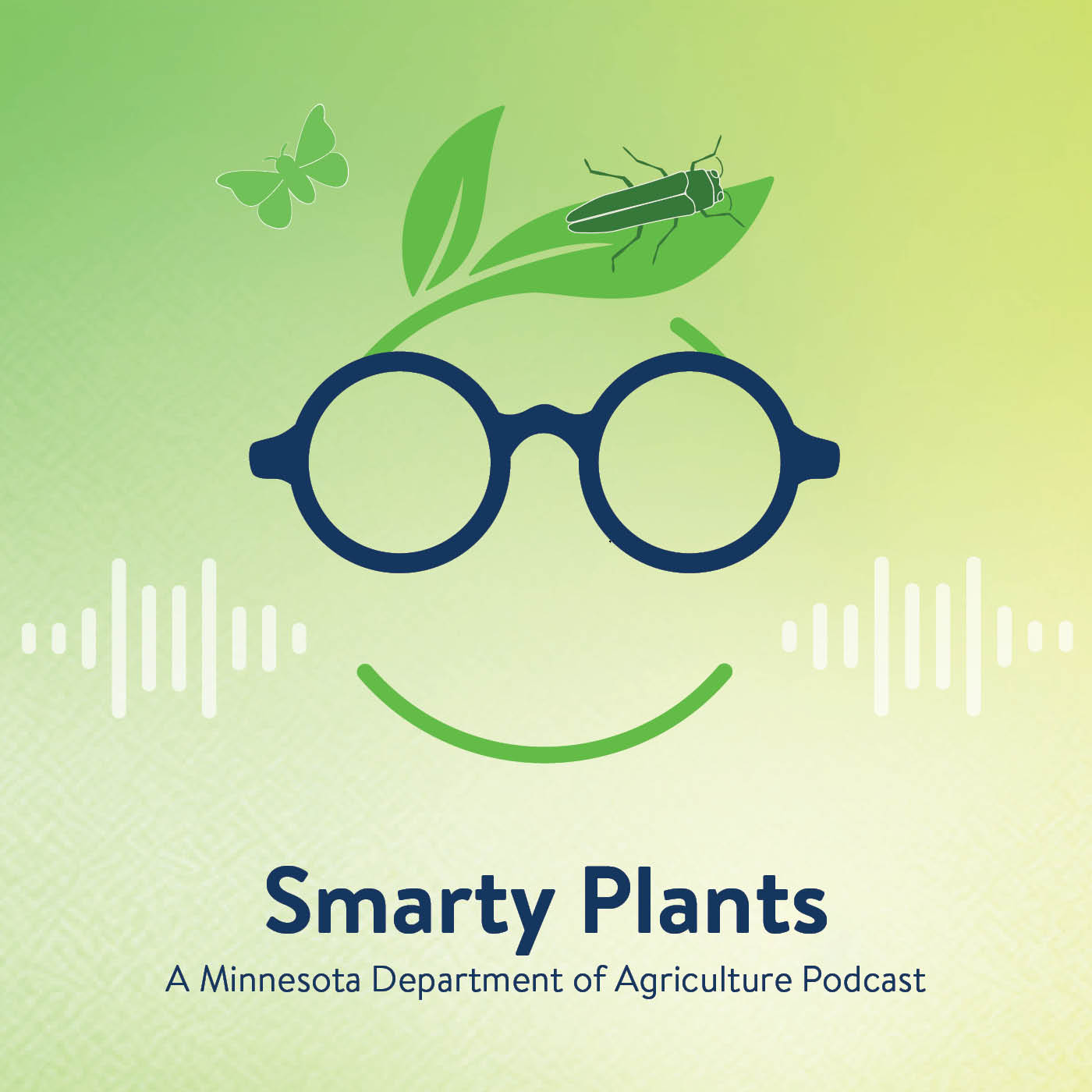
Discover Smarty Plants, the Minnesota Department of Agriculture's podcast that digs into the fascinating world of invasive species. Join expert guests as they share insights and solutions to protect our environment and agricultural resources. Visit Smarty Plants and start listening today.
